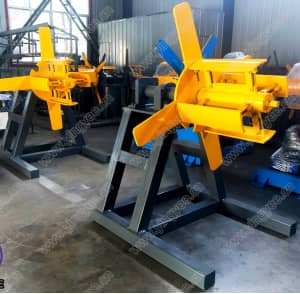
Understanding Production Lines The Backbone of Modern Manufacturing
In today's fast-paced world, production lines have become an essential component of manufacturing processes across various industries. They represent a systematic approach to assembling products efficiently and effectively, optimizing both time and resource allocation. This article explores the concept of production lines, their importance, design considerations, and their impact on productivity.
What is a Production Line?
A production line is a sequence of processes or steps that machines and workers follow to produce a product. It typically involves the division of labor, where different tasks are allocated to specific workers or machines in a streamlined manner. This method enables mass production, where large quantities of items can be produced quickly and with uniform quality.
Historically, production lines revolutionized the manufacturing process. The most notable example is Henry Ford's automotive assembly line in the early 20th century. Ford's approach significantly reduced the time it took to assemble cars, allowing for greater output at lower costs. The basic principles of Ford's assembly line continue to inform contemporary production practices.
Importance of Production Lines
Production lines are crucial for several reasons
1. Efficiency By dividing tasks among workers and machines, production lines ensure that each step of the manufacturing process is completed quickly and accurately. This division of labor minimizes the time needed for each stage of production, greatly enhancing overall efficiency.
2. Consistency Automation and standardized processes help maintain product quality. Since each worker or machine is responsible for a specific task, variations are reduced, leading to consistent results. Customers can expect the same level of quality in every product produced on the assembly line.
3. Cost-Effectiveness Mass production allows manufacturers to take advantage of economies of scale. Producing in larger quantities often reduces the cost per unit, making products more affordable for consumers and improving profit margins for businesses.
4. Flexibility Modern production lines can be designed to accommodate different products or variations in a product line. With the integration of advanced technologies and techniques, manufacturers can quickly shift production from one product to another without significant downtime.

Designing a Production Line
Designing a production line involves careful planning and consideration of various factors. Key elements include
- Product Flow The arrangement of machinery and workstations should facilitate a smooth flow of materials and products. An optimal layout reduces unnecessary movement and minimizes delays.
- Workstation Design Each workstation must be ergonomically designed to prevent fatigue and enhance productivity. Tools and materials should be easily accessible to workers, allowing them to perform tasks efficiently.
- Technology Integration Incorporating automation and technology can improve the speed and accuracy of production. Robots, conveyor belts, and computer systems can facilitate tasks that require precision and repetitive actions.
- Quality Control Incorporating checkpoints for quality assessment along the production line ensures that issues are identified early, preventing defective products from reaching consumers.
Challenges in Production Line Management
Despite their numerous advantages, managing a production line poses challenges. Fluctuations in demand can lead to overproduction or underproduction. Additionally, maintaining equipment and addressing technical malfunctions are critical to avoiding downtimes. Workforce management is another aspect that requires attention, as skilled labor shortages can hinder productivity.
The Future of Production Lines
As technology evolves, so too does the production line. Advancements such as smart manufacturing, the Internet of Things (IoT), and artificial intelligence (AI) are reshaping the landscape. These technologies allow for more sophisticated data collection and analysis, enabling manufacturers to optimize processes further and reduce wastage.
In conclusion, production lines are an indispensable part of modern manufacturing. They enhance efficiency, maintain product quality, and reduce costs, contributing significantly to the success of businesses. As manufacturers continue to adapt to new technologies and methodologies, the production line will evolve, ensuring that industries can meet the demands of the dynamic global market. Understanding and optimizing production lines will remain a focal point for companies striving for operational excellence.